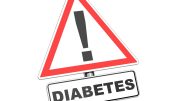
Recent research indicates that “double-jointed” individuals may face a heightened risk of long COVID, with a 30% increased likelihood of not fully recovering from the infection. This association underscores the need for further investigation into joint hypermobility as a potential risk factor for prolonged COVID-19 symptoms.
People with the condition have a 30% higher likelihood of not fully recovering from a COVID-19 infection.
People who are ‘double jointed,’ a condition formally known as generalized joint hypermobility, could face an increased risk of experiencing long COVID, according to findings from a case-control study published in the open-access journal BMJ Public Health.
They were 30% more likely not to have fully recovered from COVID-19 infection than those without hypermobile joints, and to be experiencing the persistent fatigue associated with long COVID, the findings indicate.
Association of Joint Hypermobility with Other Health Conditions
Other than older age, the likelihood of developing long COVID seems to be greater when associated with certain underlying health conditions, including fibromyalgia, irritable bowel syndrome, migraine, allergies, anxiety, depression, and back pain, explain the researchers.
These risk factors have all been independently associated with joint hypermobility, whereby some or all of a person’s joints have an unusually large range of movement.
Study Design and Findings
The researchers, therefore, wanted to find out if double jointedness might be a risk factor for long COVID in its own right, and drew on 3064 participants in the COVID Symptom Study Biobank, all of whom had had COVID-19 infection at least once.
These participants were surveyed in August 2022 to find out if they had hypermobile joints, if they had fully recovered from their last bout of COVID-19 infection, and if they were experiencing persistent fatigue.
Most (81.5%) said they had had COVID-19 at least once. Of these, information on self-reported recovery was available for 2854, of whom 2331 (82%) were women and 2767 (97.5%) were White. Their average age was 57 (range 21–89).
Around 1 in 3 (914; 32%) said they had not fully recovered from their last bout of COVID-19 infection, and of these, 269 (just under 30%) had generalized joint hypermobility.
Among the 1940 people who said they had fully recovered, almost 1 in 4 (439; just under 23%) had hypermobile joints; 400 of them were women.
After accounting for potentially influential factors, including age, sex, ethnicity, deprivation level, educational attainment, and number of vaccinations received, joint hypermobility was strongly associated with a failure to recover fully from COVID-19 infection.
People who were double-jointed were around 30% more likely to say they hadn’t fully recovered from COVID-19 infection than those with normal joints. And joint hypermobility significantly predicted high levels of fatigue, which emerged as an instrumental factor in the failure to make a full recovery.
Limitations and Conclusions
This is an observational study, and as such, no firm conclusions can be drawn about whether joint hypermobility is a causal factor for long COVID. The researchers also acknowledge various limitations to their findings—including that most of the study participants were women and of White ethnicity.
Nor did their analysis include or correct for other potentially influential factors, such as duration of symptoms and coronavirus variant, or pre-existing conditions, such as fibromyalgia, which is itself characterized by fatigue and brain fog.
As has been suggested before, long COVID is unlikely to be a single entity, but a medley of intersecting immunological, inflammatory, autonomic nervous system, respiratory and cardiovascular processes that lead to distinct symptom profiles affecting body and brain, say the researchers.
And there are probably several causes, and therefore no one treatment strategy, for long COVID, they point out, adding: “However, these results suggest further exploration of whether [joint hypermobility] is linked to a particular phenotype or subtype of those not recovering fully from COVID-19, including long COVID.”
Reference: “Is joint hypermobility linked to self-reported non-recovery from COVID-19? Case–control evidence from the British COVID Symptom Study Biobank” by Jessica A Eccles, Dorina Cadar, Lisa Quadt, Alan J Hakim, Nicholas Gall, Covid Symptom Survey Biobank Consortium, Vicky Bowyer, Nathan Cheetham, Claire J Steves, Hugo D Critchley, Kevin A Davies and Liz Stockman, 19 March 2024, BMJ Public Health.
DOI: 10.1136/bmjph-2023-000478









I wonder about studies like this. EVERYTHING is different from everything else. I can state categorically state that people with tattoos have either more or less long-term Covid.